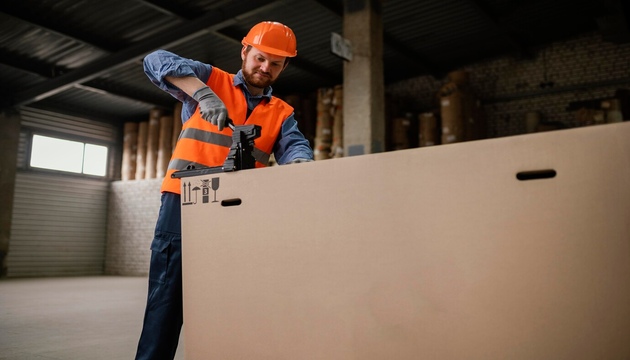How to Remove Load Bearing Wall?
How to Remove Load Bearing Wall?
Dreaming of an open-concept living space bathed in sunshine? Maybe your kitchen feels cramped, or your living room begs for a more connected flow. If your vision involves banishing a pesky wall, you might be wondering if it’s that simple to tackle a load bearing wall removal. The good news?
With careful planning and the right approach, transforming your home with a strategic load bearing wall removal is absolutely achievable! But before you grab a sledgehammer, In this blog, we’ll demystify load-bearing wall removal, breaking it down into simple, easy-to-follow steps to help you achieve your renovation goals safely and effectively.
Why Remove a Load-Bearing Wall?
Removing a load-bearing wall can significantly change your overall home’s layout, creating a more open and spacious environment. This change can improve the flow of natural light, make your living areas feel larger, and even increase your property’s value.
Homeowners often seek load-bearing wall removal to achieve an open-concept design that enhances both aesthetics and functionality. While the idea might seem daunting, consulting with load-bearing wall removal contractors can simplify the process. These professionals know how to remove weight-bearing walls safely and efficiently, ensuring your home’s structural integrity is maintained. With expert help, load-bearing wall removal becomes a feasible and rewarding home improvement project.
Also Read: 7 Things to do after home renovation
DIY vs. Professional Wall Removal:
Contemplating a load bearing wall removal to open up your home’s layout? While the dream of a free-flowing space is exciting, it’s important to understand the process involved. Here, we’ll break down the typical steps for both DIY and professional approaches, helping you decide which route best suits your comfort level and skill set.

DIY Load Bearing Wall Removal (For Experienced DIYers Only)
Step 1: Assess and Plan: Before swinging a hammer, identify if the wall is truly load-bearing. Consult your home’s blueprints or seek advice from a structural engineer. Remember, removing a load-bearing wall without proper support can be disastrous.
Step 2: Obtain Permits and Support: Even for DIY projects, permits from your local building department are usually mandatory for load bearing wall removal. Additionally, secure professional help for crucial aspects like structural calculations and temporary support beam installation.
Step 3: Careful Demolition: Once the support structure is in place, meticulously dismantle the wall section by section, ensuring the temporary supports bear the weight. Remember, this is a delicate process with a high margin for error.
Step 4: Install Permanent Support: Following demolition, a permanent beam sized by a structural engineer needs to be installed to replace the support function of the removed wall. This often involves complex cutting and maneuvering, requiring specialized tools and expertise.
Why Hire Load-Bearing Wall Removal Contractors?
Hiring load-bearing wall removal contractors can simplify and safeguard the entire process. Professionals have the expertise to handle every step correctly, from securing permits to ensuring proper support. They know how to remove a weight-bearing wall without compromising your home’s structural integrity.
Additionally, they can efficiently deal with unexpected issues, like rerouting plumbing or electrical systems. Searching for “load-bearing wall removal near me” will connect you with experts who can handle the job, ensuring a smooth and successful transformation of your space. For a stress-free experience, professional load-bearing wall removal is often the best choice.
Also Read: Where to find the best custom home builders near me

Tips for Load Bearing Wall Removal:
- Before you start, get a professional assessment to ensure it’s safe to remove the wall. This is one of the most crucial tips to remove a load-bearing wall.
- Check with your local building authority and secure the required permits to avoid legal and safety issues.
- Use temporary supports, such as adjustable steel columns, to hold up the structure while the wall is removed.
- Ensure all electrical, plumbing, and HVAC systems running through the wall are safely disconnected and rerouted if necessary.
- Equip yourself with the right tools, like sledgehammers, reciprocating saws, and protective gear.
- Choose and install a beam that can bear the load, typically a laminated veneer lumber (LVL) beam, with the help of structural guidelines.
- Look for asbestos, lead paint, or other hazardous materials that may require professional removal.
- Carefully dismantle the wall section by section to maintain control and minimize damage.
- If the project seems too complex, look for “load-bearing wall removal near me” to find qualified professionals. Load-bearing wall removal contractors have the expertise to ensure the job is done correctly.
- After the removal and installation, have the work inspected to ensure compliance with safety standards and finish the area to match the rest of your home.
What is an average load bearing wall removal cost?
Tearing down walls to create a more open and airy living space is a popular renovation project. But when it comes to load bearing walls, which hold up the weight of your home, the process requires careful planning and professional expertise. So, how much does it typically cost to remove a load bearing wall?
The average load bearing wall removal cost can vary depending on several factors, but you can expect to pay somewhere between $1500 and $6000. Here’s a breakdown of what influences the final price:
- A larger wall or one with complex features will naturally cost more to remove and replace the support structure.
- The type of support beam (steel, wood) and any additional materials needed for the project will impact the overall cost.
- Does the wall contain plumbing, electrical wiring, or HVAC ducts? Rerouting these utilities adds to the project’s complexity and cost.
- Load-bearing walls in multi-story homes require more robust support structures, driving up the price.
Conclusion:
In conclusion, removing a load-bearing wall can open up your home’s layout and create a more spacious feel. However, it’s a complex project that requires careful planning and professional expertise to ensure safety and structural integrity. While the blog offers a general guideline, consulting with a professional for assessment and execution is always recommended. Remember, safety should be your top priority throughout the process.
For experienced DIYers, the blog outlines the steps involved, but emphasizes the importance of professional help for crucial aspects. Ultimately, success hinges on proper planning, securing permits, using temporary supports, and ensuring electrical and plumbing systems are addressed. For a stress-free experience, consider searching for “load bearing wall removal near me” to find qualified contractors who can handle the job from start to finish.
FAQs About Weight Bearing Wall Removal
Do I need a permit to remove a weight-bearing wall?
Yes, you typically need a permit to remove a load-bearing wall. Consult your local building department for details.
How much does it cost to remove a weight-bearing wall?
The average cost for load bearing wall removal is between $1500 and 6000, but can vary depending on several factors (like wall size, complexity, etc.).
How long does it take to remove a weight-bearing wall?
The time to remove a load-bearing wall depends on the project’s complexity, but it usually takes several days.
Is there any load bearing wall removal near me?
You can search online for ‘load bearing wall removal contractors near me’ to find qualified professionals in your area. Or you can contact Vision Custom Homes to get your load bearing wall removed.

